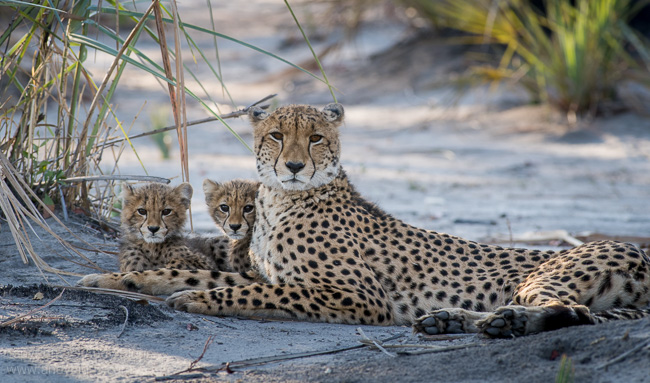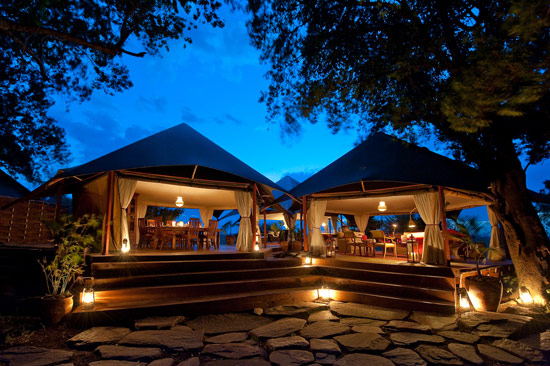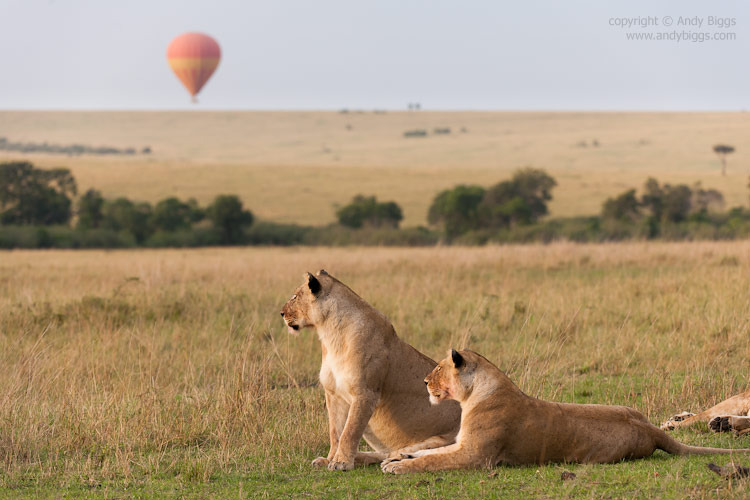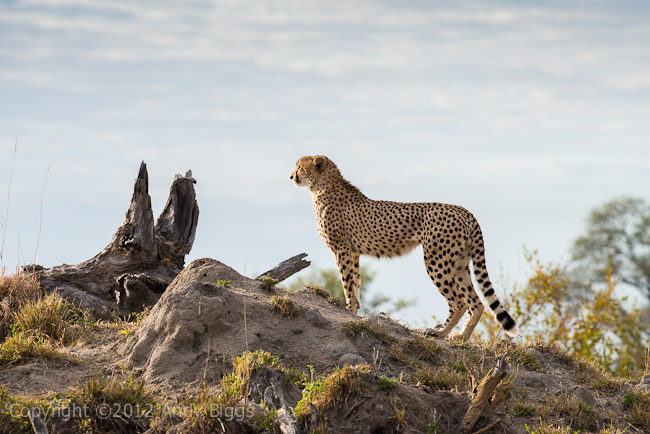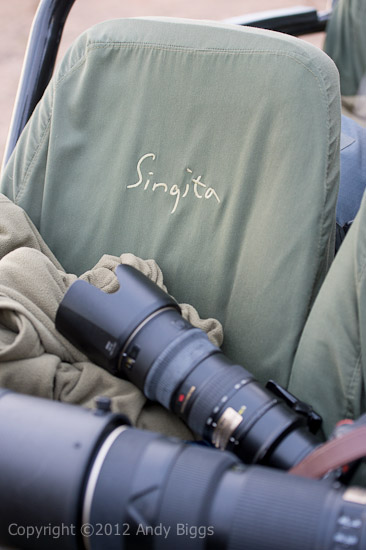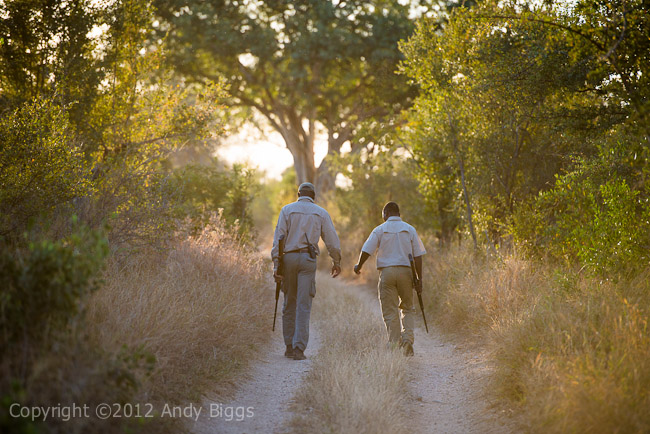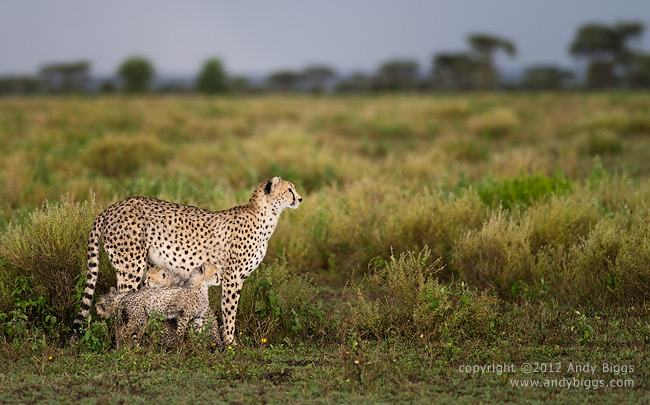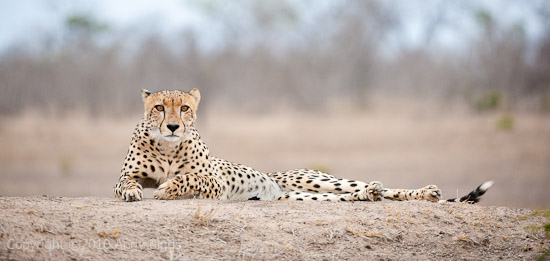You guessed it: up at 5:30, coffee at 6 and out shortly after that. Since the male cheetah has been seen almost every day since our arrival, we decided we needed some more opportunities to get him in the warm early morning light.
We spent the first 30 minutes doing nothing but looking for and analyzing tracks in the southern part of Singita. We didn’t see a single track of any of the three big cats: lion, leopard or cheetah. We stopped at a tower of giraffes (a gathering of giraffes that are walking are called a journey and a standing one is a tower) and within a few seconds we realized that they were fixated on something to the north of them. Well, wouldn’t you know it, the male cheetah was walking towards us at that moment. We had to reverse back a few hundred meters to get Lawrence back into the vehicle, as we wanted to make sure that the cheetah didn’t see him move from the tracking position to one of rows of seats. After getting Lawrence in the vehicle we drove forward again to catch up with the quickly walking cheetah.

Giraffe Sunrise
Nikon D4, 70-200mm f/2.8 VRII, 1/400 @ f/8, ISO 640
He visited many different termite mounds and downed trees, and we took the opportunity to shoot him in different types of light. It was probably one of the best and easiest photo opportunities I have had with any cheetah at any time.

Cheeah On A Tree
Nikon D800, 300mm f/2.8 VRII, 1/1600 @ f/4, ISO 2000
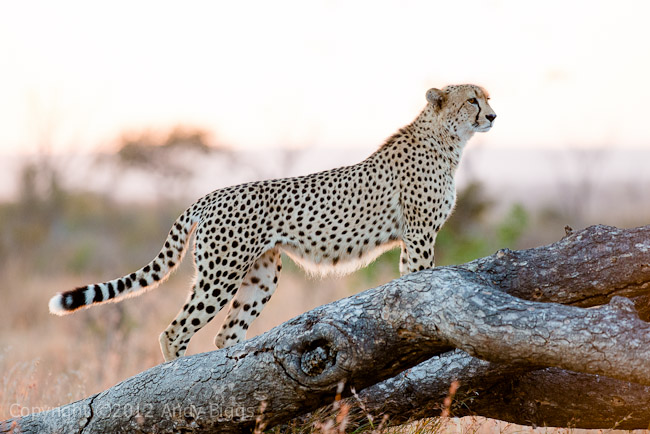
Cheetah On A Tree
Nikon D800, 300mm f/2.8 VRII, 1/640 @ f/4, ISO 2000
In the afternoon we decided to do some more walking amongst wildlife, and we decided to walk to a dazzle (yes, that is the technical term) of zebras. As we did yesterday, we paid attention to escape routes, wind direction and how the animals were dealing with our presence. On our way back to camp we tracked and located a leopard along one of the drainage areas near our camp. Initially we weren’t sure if we had seen this male before, but after he got up and walked we realized we were watching Kashane, the male that I have written about in my past entries.
We followed him for quite a while, until the sun faded away and we could no longer keep up with the fast-walking leopard. We broke off and headed towards camp, only to find a pride of lionesses a few hundred meters from the back veranda of camp. Nothing like watching lions from the deck.
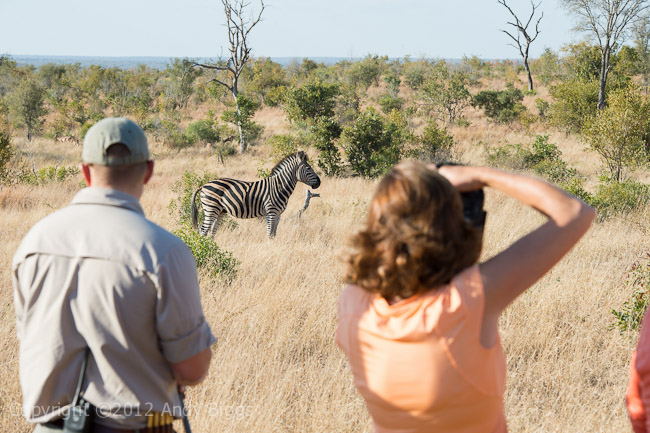
Zebra
Nikon D4, 70-200mm f/2.8 VRII, 1/320 @ f/11, ISO 400
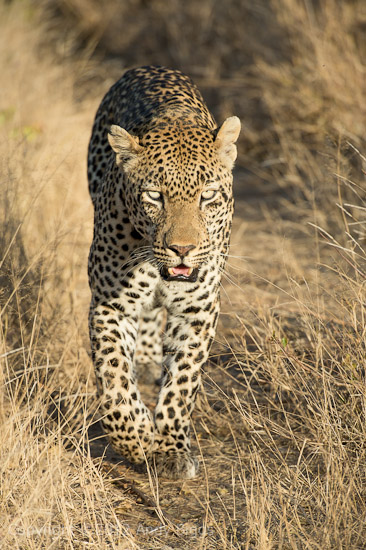
Kashane Male Leopard
Nikon D4, 70-200mm f/2.8 VRII, 1/1000 @ f/5.6, ISO 400
Camera bags on this safari are sponsored by Gura Gear, which I started in 2008. Check us out. We make the best camera bags on the planet.
Some of the gear on this safari has been provided by Borrowlenses.com. I rely on borrowlenses.com for both my own needs as well as my safari travelers’ needs. When we need big lenses, cameras or anything else photographic, we turn to borrowlenses.com to help out. They are the best resource in the industry for traveling photographers.
 Friday, December 4, 2015 at 11:23AM
Friday, December 4, 2015 at 11:23AM 